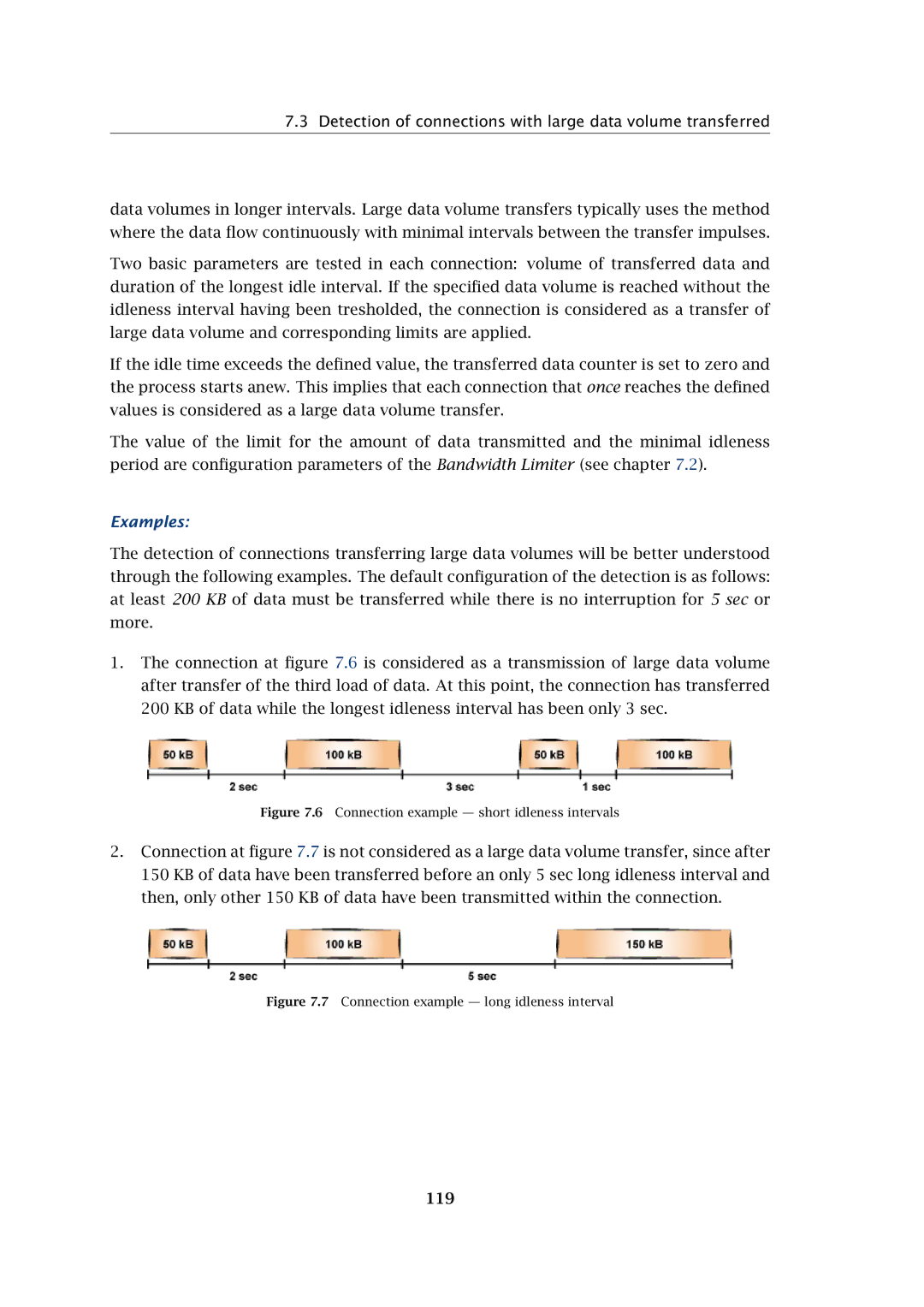
7.3 Detection of connections with large data volume transferred
data volumes in longer intervals. Large data volume transfers typically uses the method where the data flow continuously with minimal intervals between the transfer impulses.
Two basic parameters are tested in each connection: volume of transferred data and duration of the longest idle interval. If the specified data volume is reached without the idleness interval having been tresholded, the connection is considered as a transfer of large data volume and corresponding limits are applied.
If the idle time exceeds the defined value, the transferred data counter is set to zero and the process starts anew. This implies that each connection that once reaches the defined values is considered as a large data volume transfer.
The value of the limit for the amount of data transmitted and the minimal idleness period are configuration parameters of the Bandwidth Limiter (see chapter 7.2).
Examples:
The detection of connections transferring large data volumes will be better understood through the following examples. The default configuration of the detection is as follows: at least 200 KB of data must be transferred while there is no interruption for 5 sec or more.
1.The connection at figure 7.6 is considered as a transmission of large data volume after transfer of the third load of data. At this point, the connection has transferred 200 KB of data while the longest idleness interval has been only 3 sec.
Figure 7.6 Connection example — short idleness intervals
2.Connection at figure 7.7 is not considered as a large data volume transfer, since after 150 KB of data have been transferred before an only 5 sec long idleness interval and then, only other 150 KB of data have been transmitted within the connection.
